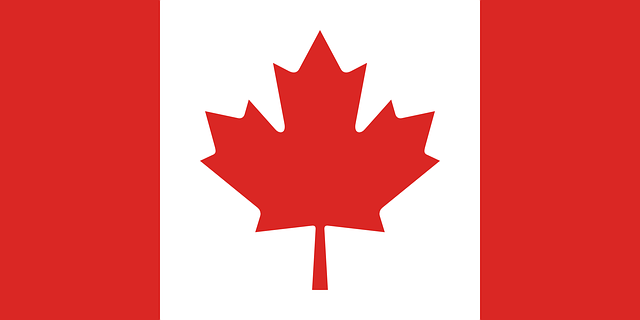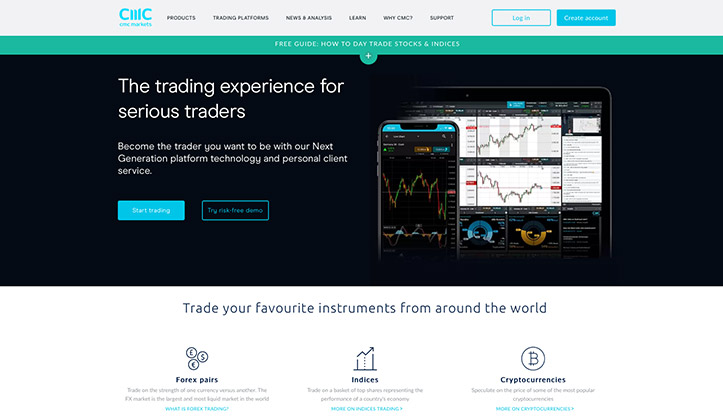CAD in real time: Live Rates for Canadian Dollar

The Canadian Dollar, abbreviated as CAD, is Canada’s official currency. Also, it can be represented as CA$ or C$ symbolically to distinguish it from other dominated dollar currencies.
Here at Forex Trading you can learn what drives the currency, where and how you can trade it and some of the most important factors to look out for in the Canadian economy. Also check out the live rates for CAD versus USD, EUR, CHF and JPY below, updates 24/7.
USD/CAD
EUR/CAD
CAD/CHF
CAD/JPY
Table of Contents: Overview
- 1 Live rates for Canadian Dollar
- 2 Denominations of CAD
- 3 Factors to consider when trading Canadian dollar
- 4 When is the best time to trade Canadian Dollar?
- 5 Future Outlook of the Canadian Dollar
- 6 Interesting facts
- 7 This is how you get started with CAD currency trading
- 8 What to consider when trading CAD?
- 9 The most traded crosses with CAD
Live rates for Canadian Dollar
The live exchange rate of the Canadian Dollar is constantly changing, just like any other currency. As mentioned earlier, among the factors affecting the exchange rate are:
(a) The interest rate in proportion to other countries and
(b) The demand for financial assets.
(c) Current export and import levels.
(d) Technical analysis for the currency against other major currency pairs.
As the live rates of the Canadian Dollar keep on changing due to the demand for its products and services to foreign countries, the rate you receive as a customer is mostly determined by the bank you select for the transfer. Any bank that uses live exchange rates gives you a chance to monitor what is going on at any given time. You can also use online converter tools to check the live exchange rates and monitor the difference during the day. Below are some of the main currency crosses against the CAD when selecting this currency for intraday trading.
EUR/CAD
The EUR/CAD indicates the number of Canadian Dollars required to buy a single Dollar. For instant, one of the largest Canadian exports is crude oil, hence the fluctuations in global growth expectations and the price of crude oil since its sensitive. One of the largest unions in the world: the Eurozone, is also among the most popular and traded currency in FX.
Because of that, there are many times when the euro was the only funding currency used during global economic uncertainty. The EUR/CAD has a higher true range compared to majors. Therefore, it offers more opportunities to swing and intra-day traders.
GBP/CAD
GBP/CAD shows the British Pound value against the value of the Canadian Dollar. Therefore, it tells traders how many Canadian dollars they need to purchase a single sterling pound. The GBP/CAD rate is strongly influenced by US dollars performance. It is also affected by political events, the euro and related economic events.
To have the latest news on the price movement of the pound to the Canadian Dollar, follow the GBP/CAD forecast and chart. Experts’ analysis and news can help you further to plan your trade.
CAD/AUD
These currencies are considered commodity currencies and ate relatively stable in the market. It dictates how many Australian dollars are required to buy one Canadian Dollar. The CAD fortunes are related to the US since it is their neighbour and largest trading partner.
The AUD is mostly affected by the alignment with emerging Asian markets and Australia.
CAD/USD
CAD/USD denotes how many US dollars are needed to buy a single Canadian dollar. U.S is the major export and import market for Canada.
Denominations of CAD
A Canadian dollar can be further subdivided into 100 cents. AS of now, the this Dollar is the 5th most held currency that forms about 2% of the world currency reserves after the Euro, British pound, Yen and the US Dollar. It is also considered to be among the stable currency globally.
In future, if you want to visit Canada, you would require Canadian Dollars for the transaction. The fall and the rise of the value of CAD depend on the number of people who want to sell or buy it in foreign exchange markets hence making it float. The Dollar’s exchange is not set by the Canadian Bank. It’s the market that sets the value.
Factors to consider when trading Canadian dollar
Canada’s Dollar (CAD) is a significant currency in the forex trading market. It represents the weaknesses and strengths of the economy of Canada as the DXY (Dollar Index) part, where it holds about a ten per cent share.
When it comes to Canada, the country represents capitalism and freedom. As a member of NAFTA (North American Free Trade Agreement), Canada has a successful economic model that many other countries can only dream of.
In Forex trading, the CAD pairs are the most popular among retail traders. The USD/CAD pair, which pits the CAD against the reserve currency of the world, the US dollar, appears to be the most popular.
The irony is that because the two countries are neighbours, their economies are linked more than many people realize.
When selling or purchasing a currency pair in trading, dealers look at the economies of the two currencies that constitute the pair. In this scenario, the economy of the United States and Canada.
The US economy is the world’s largest, and the USD is the reserve currency of the world. Hence US economic data leads the economic calendar.
It is essential to consider these factors before you start trading the this Dollar.
Interest rates
Canada’s comparatively higher interest rates stimulate demand for Canadian penny assets from foreign investors. Foreign investors’ rates of return, on the other hand, are determined by the Canadian Dollar’s predicted future performance. Foreign investors want a higher interest on Canadian dollar assets if they expect the value of the Canadian currency to fall.
Commodities pricing
The strength of global commodity prices influences the valuation of the CAD. In comparison to the US and other countries, Canada’s exports are dominated by commodities. Canada’s economics of trade improve when commodity prices go up because its products have grown more valuable. This trend is frequently reflected in a greater exchange rate because Canada’s efficient buying power is higher. The converse is also true: lower commodity prices can lead to a lower Canadian currency.
Inflation rates
The pace at which overall price levels go up over time is referred to as inflation. If inflation exceeds that of other countries in Canada, the buying power will be reduced compared to other currencies. The strength of the Dollar would fall as a result of this decrease. Likewise, the inverse is true. Inflation in Canada does have a favourable impact on the rate of exchange once it has remained relatively low for a long time.
When is the best time to trade Canadian Dollar?
It is critical to understand the optimal periods to trade the Canadian Dollar to generate substantial profits.
Because the foreign exchange market is open 24 hours a day, you can theoretically trade the Canadian Dollar at any time. The foreign exchange market offers fantastic profit opportunities whenever it is open. However, volatility fluctuates dramatically within each 24- hour cycle.
The optimal time to trade the Canadian Dollar is determined by the currency pair you are trading.

Rating: 9.78/10
Minimum deposit: 50 GBP
Description: Ready for testing something new and fun? Try CAD trading with eToro today, either on your own or do their award winning copy trading!
Risk warning: 68% of private investors lose money when they trade CFDs with eToro.
Future Outlook of the Canadian Dollar
These days there are several animating themes for the currency exchange market. The key global commodity price is now rising to 50% since the start of 2021. Many people might think that the Canadian Dollar relies upon the price of oil, but that is not true.
The global challenges that US dollar face have overwhelmed all benefits that is associated with the rise of oil price to the CAD. However, the Canadian dollar rates are believed to continuously dominate the markets in the next few months.
Interesting facts
The CBC (central bank of Canada) was founded in 1934. 1 dollar was nicknamed loonies after the aquatic bird that appears at the reverse. Also, the loonie is a name used to refer to the general monetary unit. The 2-Canadian dollar coin is called twonies or toonies featuring a polar bear. The word was made out of the word loonies and two.
Canada decided to neglect the sterling pound and started to use their Dollar because of Spanish dollar dissemination in North America. In January 1858, the province of Canada ordered all accounts to be made of their Canadian dollars and was used the same year.
The government approved using the uniform currency act in 1871 April to replace the different province currencies under a single CAD. Some of the major trading partners include China, Japan, Mexico and the UK.
Background and history
The Canadian dollar is issued by The Bank of Canada or “Banque du Canada” as you say in French. It has been around since the bank first opened its doors in 1934. However, the Canadian currency has a much older history than that. In 1858, the CAD was introduced as the official currency of the North American country, replacing both the Spanish dollar and a number of smaller, local currencies used in various territories.
CAD banknotes are available in denominations of 5, 10, 20, 50 and 100 CAD – and all coins have been portrayed with the English monarch Queen Elizabeth II, who still serves as head of state for parliamentary democracy Canada. The ISO code is CAD and the currency has a number of different nicknames in both English and French, including loonie, buck, huard and piastre.
A commodity heavy currency strongly linked to agriculture and energy prices
Canada’s economy is one of the strongest and most stable in the world, thanks in large part to the country’s vast natural resources. Significant revenues come from the services sector which now accounts for as much as 75% of Canada’s GDP, as well as the manufacturing industry, the aerospace industry, forestry and agriculture – but also from oil and natural gas extraction. Mining also plays a central role in Canadian finances, as the country has plenty of commodities such as uranium, nickel, zinc, cadmium, cobalt and copper – to coveted valuables such as gold and diamonds. For most of these, Canada is considered one of the world’s leading producers and thus an important global exporter.
Given the rich availability of valuable natural resources and Canada’s prominent role in extracting and exporting them, it is easy to understand why the Canadian currency is so highly defined as commodity-heavy. It is particularly sensitive to energy prices, as oil is de facto one of Canada’s main exports. Volatility and turmoil in the oil market can thus have a significant impact on the exchange rate.
This is how you get started with CAD currency trading
The Canadian dollar has long been a heavyweight in the international forex trading market, and is today ranked as the seventh most traded of all fiat currencies – after USD, EUR, JPY, GBP, CHF and AUD. The currency has an obvious place in the standard range of most professional currency brokers, which makes it both easy and quick to get started with CAD trading for those who are interested. With reputable eToro, you can, for example, test trade CAD/CHF, CAD/JPY and AUD/CAD with a smooth and risk-free demo account, and then run a sharp mode and advance with a real trading account. It’s easy to get started, and there is every available tool you may need to succeed better with your CAD trading.
Another exceptional platform is Scandinavian Skilling, which also offers EUR/CAD, CAD/NOK and NZD/CAD. Sign up in under 1 minute, and go short or long in CAD with record-breaking executions and tight spreads.
What to consider when trading CAD?
CAD is a large and popular currency that is traded frequently among both private individuals and institutions. The liquidity is great, especially during office hours in Canada. Many traders consider CAD to be considered with lower risk-taking in the same way as the other largest currencies. Important indicators to keep up with are, as usual, the country’s interest rates, current inflation, KPIs, statistics on the unemployed and, of course, the situation in the North American oil market – all of which may have either a positive or negative effect on the exchange rate.
Furthermore, CAD has a floating exchange rate, which means that it is in no way pegged to any other currency. There is also no particular correlation with the British pound, despite the fact that Canada is under the British head of state.
Minimum deposit: Unlimited
Description: One of the top sites for trading CAD. User friendly, intuitive and professional in every way. Try CMC Markets now!
Risk warning: 69% of all non-professional clients lose money on CFD-trading with this broker.
The most traded crosses with CAD
Here, we are bringing up four of the most currency pairs with Canadian dollar.
USD/CAD: Unanimous statistics from many currency brokers and trading platforms show that USD/CAD is the most popular pair to trade when it comes to CAD trading. The exchange rate usually offers moderate volatility, with the exception so far in 2020 when CAD had an unusually shaky against the USD, like many other currencies.
EUR/CAD: Another popular and stable pair to trade, available at most brokers. Good liquidity, low spread.
AUD/CAD: Two commodity-heavy currencies in the same pair, however, depending on different markets – mainly metal and grain for AUD, and oil and natural gas for CAD, respectively.
CAD/JPY: Popular currency pairs offered by many brokers. Yen trading is attractive in carry trading, thanks to JPY’s low interest rates.







